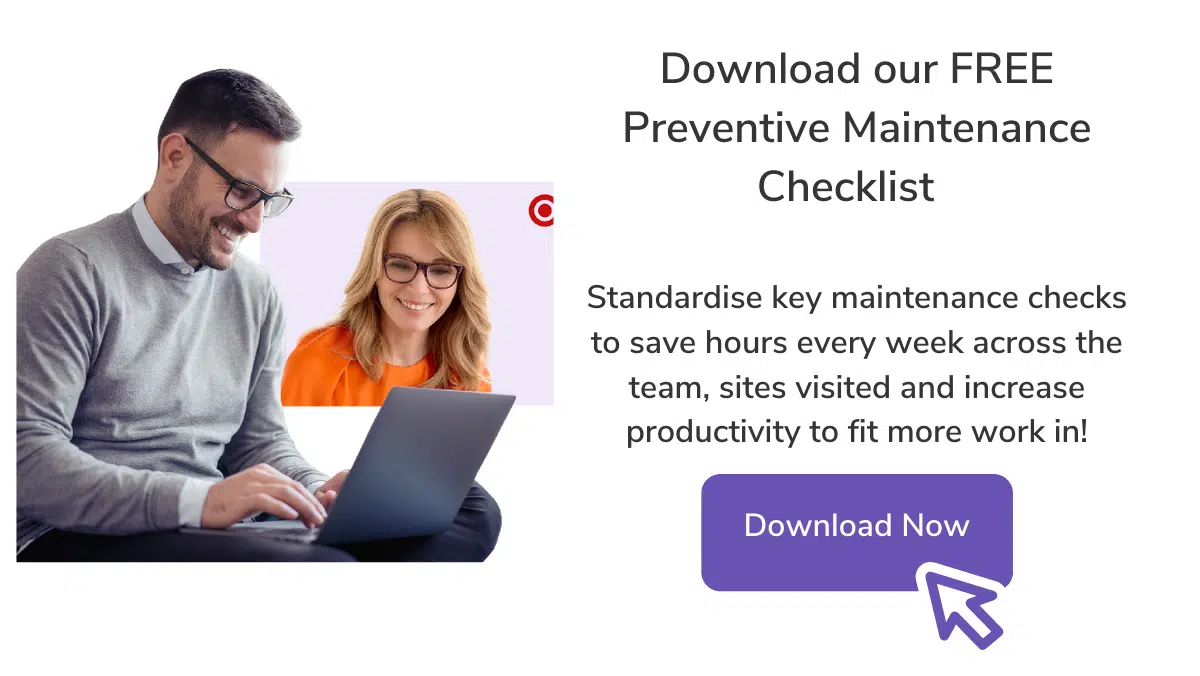The Ultimate Guide To Planned Maintenance
Do you dread receiving the call from a customer saying their unit has just broken down and they need someone ASAP to come fix it? One of the biggest challenges in a HVAC business can be the seasonality of the work and the usual influx of problems/issue with that…ie everyones AC unit needs servicing when they start using it in summer!
How can you avoid that phone call? With planned maintenance you could have picked up that issue before the customer called. It might have been a simple fix if only it had been caught in time. This is why preventative maintenance is such a crucial aspect to be incorporated into your planning.
With success in planned maintenance your customers will be happy because you have already been to site and cleaned and serviced the assets.
Planning maintenance visits helps manage both your workload as well as avoid units breaking down after long periods of non-use and having to manage disgruntled customers.
When you incorporate a maintenance strategy (as part of your HVAC business plan) you can nurture customer relationships, increase the chance of repeat work, maintain assets before they break down and balance your workflow throughout the year.
Ask yourself, what would it feel like if you had maintenance activities scheduled throughout the year and you are not having to manage your team up (or down) through peak/trough periods in the year? Imagine if you had a CMMS maintenance software to do the hard work for you?
What is preventative maintenance?
The essence of preventative maintenance is fixing the problem before it has a chance to occur or spiral out of control. With a solid asset testing framework you can detect issues before they cause damage through a preventative maintenance schedule. With a well executed planned maintenance schedule you ensure that assets/units are properly cleaned and taken care of and the customer never has any issues.
Preventative maintenance is the introduction of service and maintenance work that can increase the lifespan and efficiency of a unit. The other upside is this type of work can boost your HVAC Sales revenue and help you run a success HVAC business.
Top 6 benefits of planned maintenance:
Without a well documented & executed planned maintenance offering, you could be missing out on work that will either go undone or be passed to another HVAC company. When you have a planned maintenance system in your business you are keeping more work in your company and improve your customer service.
With planned maintenance you will:
1. Save Time
With planned maintenance, you will save time by preventing issues rather than fixing them. Long term this can save you hundreds of hours every year. Imagine if you you could cut down your emergency calls outs simply by preventing defects from occurring.
2. Save Money
Planned maintenance will also help you to save money on costly repairs and avoid supply issues on short notice. The price of planned maintenance is always cheaper than replacing parts after a breakdown has occurred- not to mention the inconvenience that a breakdown will cause to your schedule.
3. Stop Unplanned Interruptions
You can easily reduce the unplanned interruptions to your schedule by planning maintenance ahead of time. This can save you a big headache when you have a busy schedule and you have customers calling up with emergency breakdowns.
This means you can focus on your install work and schedule your repair and maintenance work in your quiet period when you have more time.
4. Balance Your Cash Flow
When you have planned maintenance in your business, you can evenly distribute work for employees and obtain a more balanced cash flow throughout the year. Growing your business will be easier with a bigger team as you can tackle more work. However when you have a down period you may find you have too many technicians and not enough work. With planning your preventative maintenance during your busy period you can keep more technicians all year round
5. Boost Efficiency
With planned maintenance, your assets will be more efficient. When you regularly service your assets, you ensure that they are operating at peak performance and make sure there are no defects lowering the efficiency of the unit. Long term, this will increase the lifespan of your assets as well as lower the costs for the customer.
6. Meet All Your Requirements
When you use planned maintenance you will meet all your warranty and operational parameters. This ensures that it can be kept up to date which means it is safer for your customer and the team when on site.
Why leave money on the table
Cash flow can be hard to balance throughout the year with the seasonality of HVAC products. You may find that you are flat out in summer and winter with install work but in the other months of the year you have next to nothing going on. Fill this gap in your schedule and in your pocket by penciling in service work to rake in that extra cash and keep your technicians busy.
If you neglect to schedule in that service work you are leaving that extra money and work out there for other companies to come in and take.
When you have successfully planned your maintenance in your off season you will find your cash flow is more balanced and you have less stress trying to hold out until the busy season again.
Building a Planned Maintenance Workflow:
How often will you schedule maintenance work? Will you send out automated reminders to your customers? Does your team need extra training for maintenance work? Do you have an inspection checklist? Here are the tips you need to know when building your planned maintenance workflow:
1. Set Your Goal
When you begin documenting your approach to preventative maintenance you need to start with the service goal or niche you want to present in the marketplace. By setting yourself a goal of where you want your planned maintenance system to take you, you will be able to better realise and aim for success. This will also help you with your marketing plan on how to obtain the leads, who or where you may get referrals for maintenance work from and how you will pitch (price) and close quotes.
2. Create Procedures
Secondly you need to create procedures and train your team in what planned maintenance is and how you will go about incorporating it into your day to day operations.
If you are going to make planned maintenance a part of your schedule, ensure your team is fitted with the right tools for the job.
Your goal in planned maintenance is to be able to predict issues that may occur and schedule to fix them before they become a bigger issue. This plan may be following the manufacturers guidelines in the warranty period or a regular schedule of review to keep the unit humming.
3. Know Where to Start
Here are some tips in considering this type of work in your HVAC business.
- What type of asset/equipment you want to service
- How will you obtain these customers/job types
- Are there any standards/industry guidelines that govern these asset types
- Do you need to be accredited to maintain these assets (NATA, Standards)
- Capture all the testing criteria / templates
- Train the team and ensure compliance (if accreditation is required)
- Document the standard operating procedures for managing preventative maintenance scheduling
- When
- Who
- What reporting requirements need to be met (for the customer or the accreditation compliance)
- Seek HVAC automation apps to help streamline the process and reduce paperwork headaches
It can be hard to know where to start when considering planned maintenance in your business but with the right direction you can create growth with the help of preventative maintenance.
Next steps
It is all about finding what works best for your business so if at first you don’t succeed… try and adjust your methods until you have perfected your plans. Not every business is the same so it may take a little adjusting until you have found the right balance for your team.
To implement preventative maintenance in to your business, an automated job management software can be an important tool. With the easy to use software you can avoid the clutter of a paper based system and ensure accuracy in your work and speedy turnaround of invoicing and reports for customers.
What You Should Do Now
- Book a Demo. You’ll be in touch with an automation expert who has worked in this space for over 5 years, and knows the optimal workflow to address your needs.
- If you’d like access to free articles about managing HVAC workflows, go to our blog.
- If you know someone who’d enjoy reading this page, share it with them via email, Linkedin, Twitter, or Facebook.





